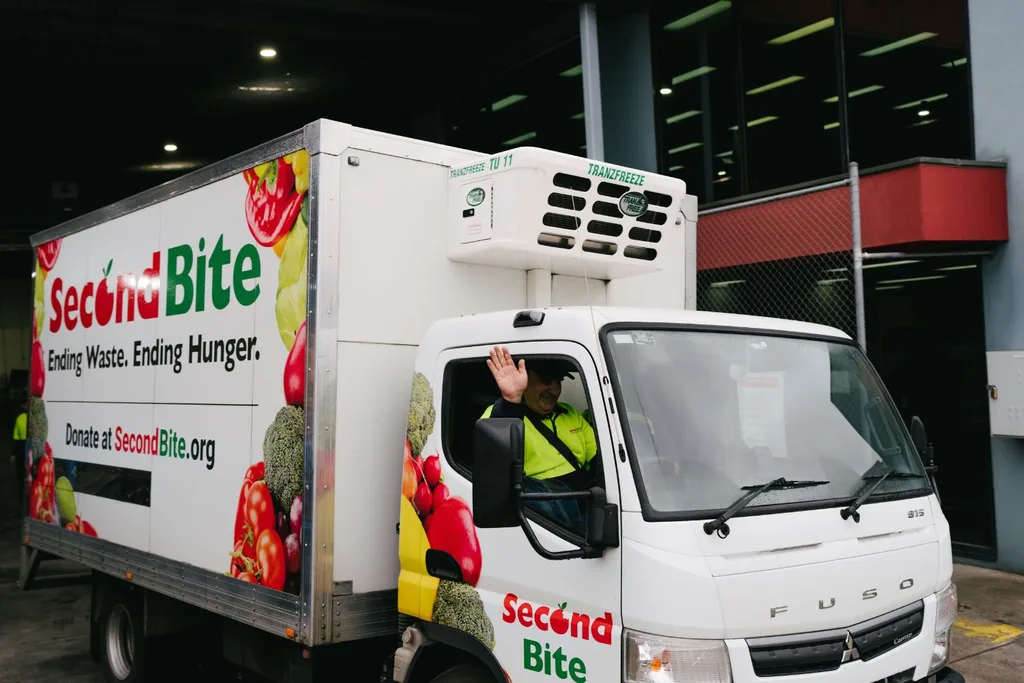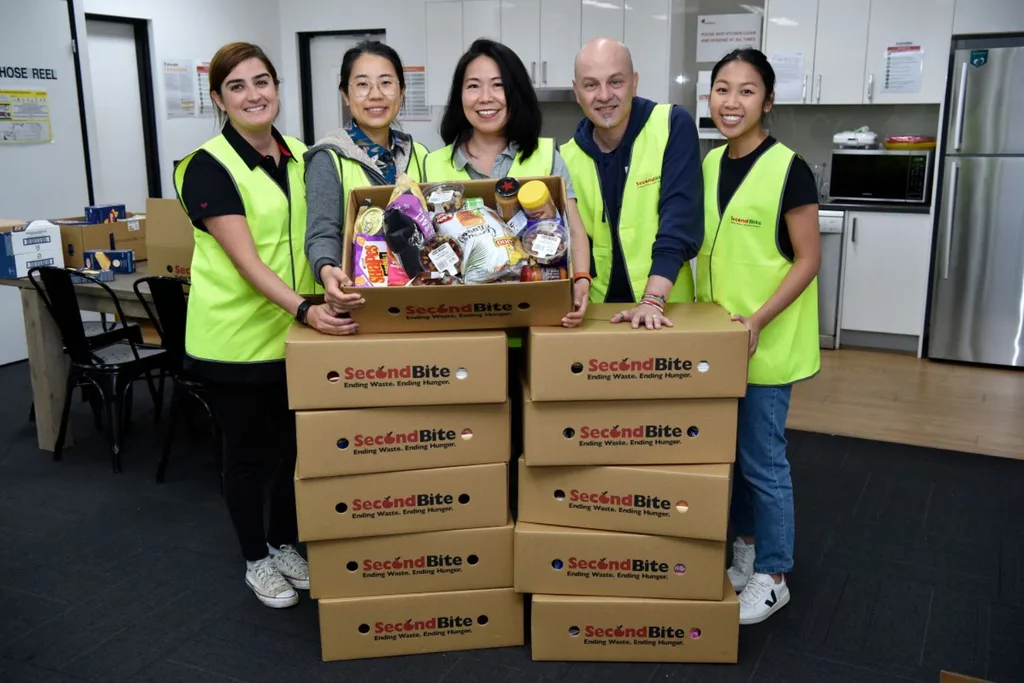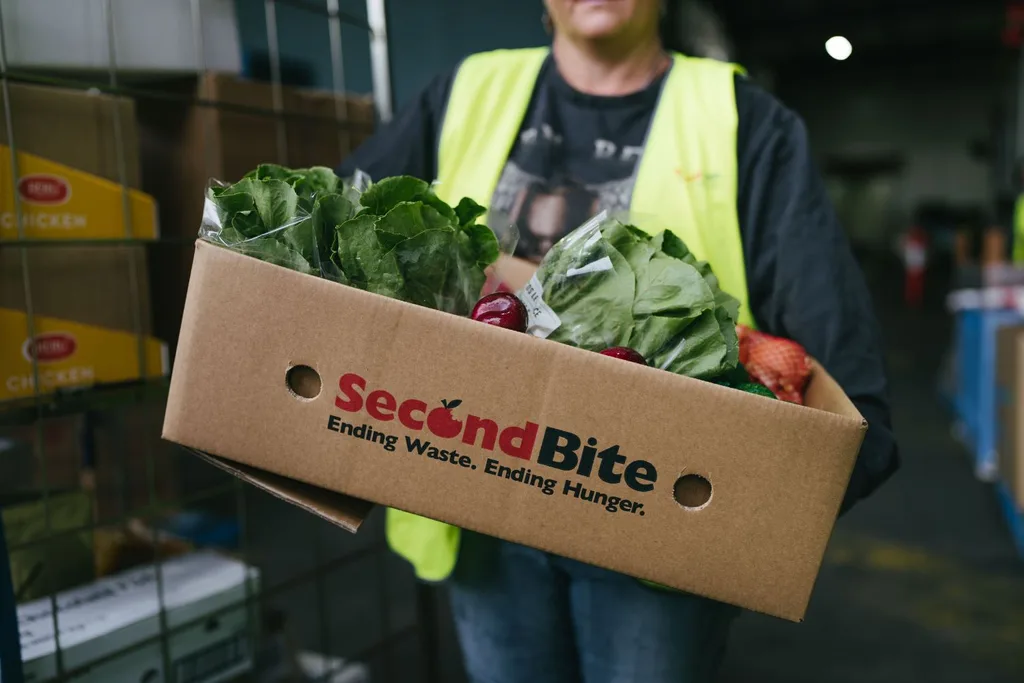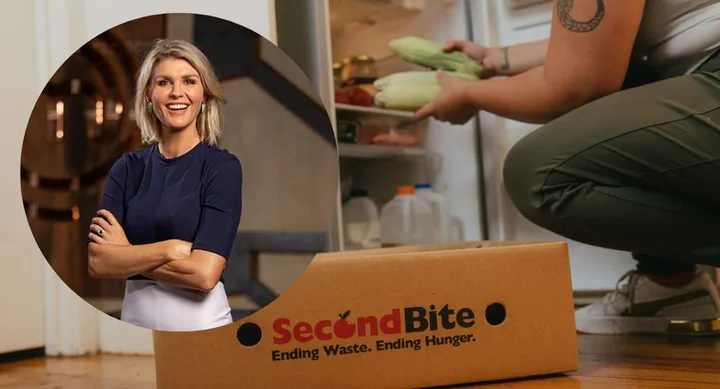As Aussies continue to feel the crunch of the cost of living crisis, many are now looking for new ways to save money – especially when it comes to their weekly grocery shop.
From hunting the best deals, to reusing leftovers, and keeping ingredients fresh for longe, MasterChef Australia star Courtney Roulston is on hand to provide her top tips and tricks to preventing food wastage.
WATCH NOW: How to reduce food waste in the kitchen
It’s fitting then that Courtney is the proud ambassador for SecondBite to raise awareness for the charity’s latest initiative – the inaugural ‘No Food Waste Challenge’ which will be taking place from September 8th until September 29th.
The charity is encouraging Aussies to get creative in the kitchen and reduce their food waste, as well as raising awareness for food insecure Aussies.
RELATED || How to use food leftovers
The best part? Every $1 raised will help provide up to five nutritious meals for those doing it tough.
Scroll on for more information about the challenge (including how to sign up), as well as Courtney’s expert advice for making the most of the ingredients you’ve got at home!

How can everyday Aussies “wage a war” against waste?
A great place to start is to sign up for SecondBite’s No Food Waste Challenge this September!
We will be sharing loads of practical and easy tips for home cooks to help reduce what ends up in the bin and fun ways to repurpose leftovers, which will result in saving you money at the same time.
I think starting small is always a great way to begin changing habits. It could be as simple as saving your vegetable scraps and making a weekly stock.
Start writing a practical shopping list that lines up with your schedule for dinners and lunches that week. Seek out fresh produce with less or no plastic packaging (for example, buying a whole pumpkin instead of a cut and wrapped one.)
Make an effort to store produce correctly to make it last longer. Things like potatoes and onions are best stored in a cool dark place. Fresh herbs will last much longer wrapped in damp paper towel and bananas release a gas that can ripen other fruits quicker, so keep your fruits on the countertop in separate bowls to get a longer life out of them.

For those in need of some inspiration, do you have any recipe suggestions that could help Aussies get the most out of their most wasted foods?
A frittata is one of the best recipes to use up an array of bits and bobs you may have on hand. All you need is a few eggs, and the rest of the fillings can be a fridge-raid situation. Whether it’s wilted leafy greens, odd bits of cheese, leftover roast vegetables, tired-looking herbs, or some peas from the freezer you can easily make a delicious frittata to enjoy any time of the day!
A lot of people cut the leaves from cauliflower and throw them away, but they are completely edible and can be enjoyed in a few different ways. If roasting a cauliflower whole- leave the leaves on to protect the cauliflower and they add a crispy crunch to the outside of the tender roast cauli. They can be chopped and used in a stir fry or salads. You can also steam the whole leaves coat them in a spiced chickpea flour batter and fry them until crispy….A bit like a vegan-style crispy rib!
Every week I have a container in the fridge that I collect all my vegetable scraps and then I make a stock out of them with the addition of bay leaves, peppercorns, and some salt. If I cook a Sunday roast, I add the leftover bones in and simmer for a few hours for a flavourful bone broth.

What common household ingredients can home cooks get the most use out of?
Let’s start with leftovers. Things like leftover steamed rice are perfect for tossing into fragrant fried rice, a creamy rice pudding, or a silky congee soup.
Cooked too much pasta? Turn it into pasta bake, a pasta frittata, or add it into a crisper-clean-out minestrone soup.
Leftover roast meats like lamb or chicken are delicious when made into a pie filling.
That half loaf of stale bread lurking around can be given a second life by making crispy croutons, pangratatto, bread and butter pudding, or bread dumplings for soups, like matzo balls.
Any old herbs that need using up are great blitzed into a pesto that you can then freeze in an ice cube tray and use in pasta, risottos, and dips as you need.
WATCH NOW: Seven tips to reduce food waste. Article continues after video.
What do you think Aussies are hesitant about using their leftovers/expiring ingredients in additional meals?
FOLO (Fear of Leftovers) is a real thing! I think there are a few reasons for people not embracing the leftovers that are glaring at them on the fridge shelf.
Some prefer to skip ahead to new or purchased meals, some are unsure how long leftovers will last and fear getting ill and then there are those who simply don’t have the inspiration to know how to make leftovers taste great in another meal.
The rise in popularity of delivery services like Uber Eats & Menulog makes clicking for a new meal & chomping it down without realising the costs adding up on their app is also contributing to the problem.

The cost of living has skyrocketed in recent months, with the price of many supermarket staples also rising. What are some cost-effective swaps Aussies can make?
Going meat-free for one or two nights a week will save you a packet at the checkout. Using tinned pulses and spices for burger patties is much cheaper than beef try chickpeas in a curry or replacing half the mince with kidney beans in a chilli con carne. You won’t be sacrificing the protein hit but your wallet will love you for it!
Buying a whole chicken rather than pre-cut portions is also a great money saver. You get much more `meal mileage` buying a whole bird and you can make several different meals from it. Use the bones in stocks, the legs and wings can be roasted, and the thighs are great in curries, stir-fries, or pie fillings.
Eggs also pack a protein hit, but are much more wallet-friendly than meat, so try swapping in eggs to stir-fries, veggie noodle dishes, curries, fried rice, and sandwich fillings rather than always using meat.
In-season produce is available in abundance, making it more affordable, better tasting, and often has much less transport miles attached to it, so shop the seasons!
That’s not to say that frozen fruit and veg are inferior, things like frozen berries are just as tasty as fresh and are great when used in smoothies, healthy ice creams, or cakes. Frozen peas are so handy to have in the freezer for soups, fried rice, smashed onto sourdough, or tossed through salads.
Sign up for the Second Bite No Food Waste Challenge here.
Another easy way to reduce food waste is by donating to SecondBite – the food rescue organisation that rescues 25 million kilos of food from landfill every year.










